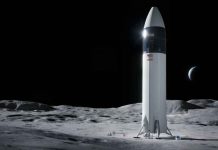Innovative Technology and Science Instruments Touch Down on the Moon
For the first time in over five decades, NASA has successfully operated new science instruments and technology demonstrations on the Moon, marking a historic achievement through its Commercial Lunar Payload Services (CLPS) initiative. This monumental moment was made possible by Intuitive Machines’ Nova-C lander, dubbed Odysseus, which embarked on a seven-day voyage to the Moon, culminating in a precision soft landing near Malapert A in the Moon’s South Pole region at 5:24 p.m. CST on Feb. 22. Demonstrating robust health, the lander is now actively collecting solar power and transmitting vital data back to Earth from its mission control in Houston, showcasing the first-ever commercial uncrewed landing on the lunar surface.
A New Era of Lunar Exploration Begins
Loaded with six cutting-edge NASA science research and technology demonstrations, alongside various customer payloads, Odysseus’ journey represents a significant stride in lunar exploration. These instruments, having successfully completed their transit checkouts, were part of a mission that utilized NASA precision landing technology to ensure a smooth touchdown. This mission serves as a cornerstone of NASA’s Artemis campaign, laying the groundwork for future astronaut missions aimed at uncovering water and lunar resources in the coming years.
NASA Administrator Bill Nelson lauded the achievement, highlighting the pivotal role of commercial partnerships under NASA’s CLPS initiative in reinforcing American leadership in space exploration. The successful collaboration between Intuitive Machines, SpaceX, and NASA not only signifies a new chapter in lunar exploration but also paves the way for future manned missions to the Moon and eventually to Mars.
Technological Marvels on the Lunar Surface
Among the technological feats accomplished, NASA’s Navigation Doppler Lidar (NDL) system played a crucial role in aiding Odysseus’ successful landing. This system, which operates on principles similar to radar but uses laser pulses, was instrumental in navigating the lander to its precise landing spot, especially in the face of last-minute challenges encountered by Intuitive Machines. The mission’s success story is not just about reaching the Moon but also about the innovative technology that made this precision landing possible.
Looking Ahead: The Future of Lunar Exploration
With Odysseus now operational on the Moon’s surface, NASA’s instruments are set to embark on their scientific endeavors, focusing on lunar surface interactions and radio astronomy. The mission also carries a retroreflector array that will serve as a part of a lunar location marker network, essential for future communication and autonomous navigation technologies on the Moon.


